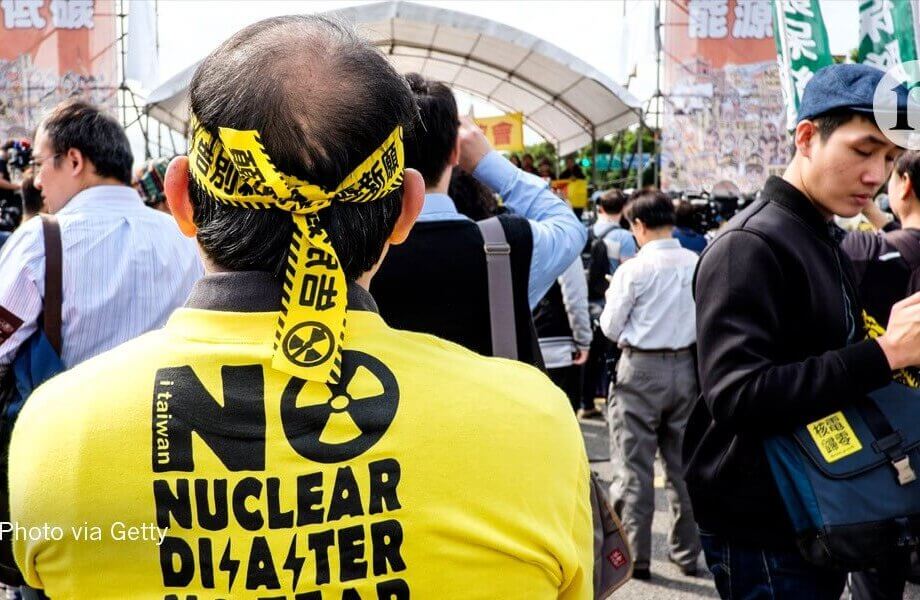Introduction: The End of an Era for Taiwan’s Nuclear Power
On May 17, 2025, Taiwan disconnected its last operational nuclear reactor at the Maanshan Nuclear Power Plant, marking the end of nearly five decades of nuclear energy on the island. This historic move, the culmination of a long-standing policy to create a “nuclear-free homeland,” has ignited intense debate about the future of Taiwan’s energy security, economic competitiveness, and environmental goals. The shutdown comes at a time of rising global interest in nuclear power as a low-carbon energy source, and as Taiwan faces unique geopolitical and industrial challenges.
- Introduction: The End of an Era for Taiwan’s Nuclear Power
- Why Did Taiwan Phase Out Nuclear Power?
- Energy Mix After the Nuclear Shutdown: Fossil Fuels Dominate
- Economic and Industrial Impacts: Rising Costs and Tech Sector Risks
- Energy Security: Strategic Vulnerabilities in a Tense Geopolitical Climate
- Environmental Debate: Air Quality, Emissions, and the Role of Renewables
- Political and Social Dynamics: Public Opinion and Policy Shifts
- Renewables and the Path Forward: Opportunities and Challenges
- Lessons from Taiwan: A Test Case for Energy Transitions
- In Summary
The decision to phase out nuclear energy is rooted in decades of political, social, and environmental activism. In 1996, a dramatic standoff on Orchid Island saw indigenous residents block a freighter carrying nuclear waste, a pivotal moment that helped shape public sentiment and government policy. Since then, nuclear power’s share of Taiwan’s electricity mix has steadily declined, replaced by a growing reliance on fossil fuels and, to a lesser extent, renewables.
Why Did Taiwan Phase Out Nuclear Power?
The roots of Taiwan’s anti-nuclear movement run deep. The construction of nuclear plants in the 1970s and 1980s occurred under martial law, with little public consultation. The 1986 Chernobyl disaster and the 2011 Fukushima accident in neighboring Japan heightened fears about nuclear safety, especially given Taiwan’s seismic activity and dense population. These events galvanized public opposition and became entwined with Taiwan’s democratization and environmental movements.
The Democratic Progressive Party (DPP), which came to power in 2016, made a nuclear-free homeland a central policy goal. The government pledged to decommission all nuclear plants by 2025, accelerate the deployment of wind and solar power, and reduce reliance on coal. This policy was enshrined in law and supported by environmental groups, but has remained controversial among industry leaders and energy experts.
Energy Mix After the Nuclear Shutdown: Fossil Fuels Dominate
With the closure of Maanshan’s last reactor, nuclear power now accounts for zero percent of Taiwan’s electricity generation. According to the Ministry of Economic Affairs, fossil fuels—primarily coal and liquefied natural gas (LNG)—now supply about 84% of the island’s electricity. Renewables, mostly solar and wind, make up just over 12%, with ambitious targets to reach 20% by 2027 and 30% by 2030.
To compensate for the loss of nuclear capacity, Taiwan Power Company (Taipower) is rapidly expanding gas-fired power plants and investing in new renewable projects. The government insists that power supply will remain stable through at least 2032, with reserve margins projected to stay above 10% even during peak demand. Premier Cho Jung-tai has reassured the public that new generation units at the Hsinta, Sun Ba, and Datan plants will fill the gap left by nuclear, and that the grid is being strengthened to support the growth of high-tech industries and AI data centers.
Economic and Industrial Impacts: Rising Costs and Tech Sector Risks
The economic implications of the nuclear phaseout are significant. Taiwan’s world-leading semiconductor industry, anchored by companies like TSMC, is a major consumer of electricity—TSMC alone uses nearly 10% of the island’s power. As demand for energy-intensive AI and chip manufacturing grows, so too does the pressure on Taiwan’s grid and energy costs.
Industry analysts warn that removing nuclear from the energy mix will raise power generation costs by NT$100 billion (about $3.2 billion USD) annually. LNG imports, needed to replace lost nuclear capacity, are subject to global price fluctuations and supply risks. Taipower, which has absorbed higher fuel costs to keep electricity prices stable, reported over NT$420 billion ($14 billion USD) in accumulated losses by the end of 2024. This financial strain is likely to force future rate hikes for businesses and households.
Stable, affordable electricity is crucial for Taiwan’s industrial competitiveness. If energy costs continue to rise or supply becomes unreliable, there is a risk that global tech giants may relocate operations to regions with more secure and greener energy sources. This would have far-reaching consequences for Taiwan’s economy and its “silicon shield”—the strategic value of its semiconductor industry in global supply chains.
Energy Security: Strategic Vulnerabilities in a Tense Geopolitical Climate
Perhaps the most pressing concern is energy security. Taiwan imports 97% of its energy, including all of its LNG, coal, and oil. The island’s geography—surrounded by sea and within 160 kilometers of China—makes it highly vulnerable to supply disruptions, especially in the event of a military blockade or conflict.
Experts argue that nuclear power, with its on-site fuel storage and low-carbon output, provided a measure of energy independence and resilience. In contrast, LNG supplies can be disrupted within days if shipping lanes are blocked. Taiwan currently has only about 11 days’ worth of gas storage, a critical weakness given rising tensions with China.
Some analysts point to the example of Ukraine, where nuclear plants have helped maintain electricity supply despite attacks on other infrastructure. They argue that China would be reluctant to target nuclear facilities in Taiwan due to the risk of radioactive fallout affecting its own population and economy. Without nuclear, Taiwan’s grid is more exposed to both physical and economic threats.
Environmental Debate: Air Quality, Emissions, and the Role of Renewables
One of the main arguments for phasing out nuclear was environmental safety, particularly concerns about radioactive waste and the risk of accidents. Orchid Island, home to Taiwan’s indigenous Tao people, has long been a flashpoint for protests over nuclear waste storage. Residents continue to demand the removal of waste barrels, citing health and ecological risks.
However, critics of the phaseout warn that increased reliance on fossil fuels will undermine Taiwan’s climate goals. Nuclear power, while generating long-lived waste, produces almost no greenhouse gas emissions. With coal and gas now dominating the energy mix, carbon emissions are expected to rise, making it harder for Taiwan to meet its target of a 38% reduction by 2035 and net zero by 2050.
Supporters of the transition counter that air quality has actually improved in recent years, with average PM2.5 concentrations dropping from 20 to 12.8 µg/m³ between 2016 and 2024. This is attributed to stricter regulations, reduced coal use, and the growth of renewables. They argue that nuclear and renewables often compete for policy attention and investment, and that a clear focus on green energy will accelerate decarbonization.
Political and Social Dynamics: Public Opinion and Policy Shifts
The nuclear debate in Taiwan is deeply political. While the DPP has championed a nuclear-free future, public opinion has shifted in recent years. Polls show that a majority of Taiwanese now support extending the life of existing nuclear plants, especially as energy costs rise and climate concerns mount. In 2018, a referendum rejected the nuclear phaseout, but the government pressed ahead with its policy. Another vote in 2021 upheld the closure of one plant, but the margin was narrow.
In the wake of the Maanshan shutdown, opposition parties have pushed for a new referendum on restarting nuclear operations. The legislature recently amended the Nuclear Reactor Facilities Regulation Act to allow for license extensions of up to 20 years, opening the door for potential restarts if safety and waste issues can be addressed. Premier Cho and Economic Minister Kuo have expressed openness to new nuclear technologies, provided there is national consensus and robust safety measures.
Social consensus remains elusive, however. For many, especially indigenous communities and environmentalists, the legacy of nuclear waste and the risks of accidents outweigh the benefits. For others, energy security and economic stability are paramount. The government faces the challenge of balancing these competing priorities while navigating a rapidly changing energy landscape.
Renewables and the Path Forward: Opportunities and Challenges
Taiwan’s government has set ambitious targets for renewable energy, aiming for 20% of electricity from renewables by 2027 and 30% by 2030. Major investments are underway in offshore wind, solar, and energy storage. The Shalun Green Energy Technology Demonstration Site in Tainan showcases near-zero and zero-emission model homes, highlighting the potential for sustainable living.
Yet, significant obstacles remain. Taiwan’s mountainous terrain and limited land make large-scale solar challenging. Offshore wind projects face delays due to local content requirements and geopolitical risks. The grid must be upgraded to handle intermittent renewable output and rising demand from data centers and industry. Battery storage and demand response programs are expanding, but scaling up to meet peak loads is a complex task.
Some experts advocate for a diversified approach, including the development of small modular nuclear reactors and greater private investment in clean energy. Others emphasize the need for continued public engagement and transparent decision-making to build trust and consensus.
Lessons from Taiwan: A Test Case for Energy Transitions
Taiwan’s experience offers valuable lessons for other countries grappling with the trade-offs of energy transition. The island’s journey from nuclear dependence to a fossil-fuel-heavy, renewables-aspiring system highlights the complexities of balancing safety, security, affordability, and sustainability.
As the world races to decarbonize and electrify, Taiwan’s challenges—energy security in a tense geopolitical environment, the demands of a high-tech economy, and the need for public consensus—are increasingly relevant. The debate over nuclear power is far from settled, and the coming years will test the resilience and adaptability of Taiwan’s energy system.
In Summary
- Taiwan shut down its last nuclear reactor in May 2025, ending nearly 50 years of nuclear energy use.
- The phaseout was driven by safety concerns, public opposition, and a government commitment to a nuclear-free homeland.
- Fossil fuels now supply 84% of Taiwan’s electricity, with renewables at just over 12% and ambitious targets for future growth.
- The shutdown raises energy security concerns, especially given Taiwan’s reliance on imported LNG and the risk of supply disruptions amid tensions with China.
- Economic impacts include rising power generation costs, financial strain on Taipower, and potential risks to the semiconductor industry.
- Environmental benefits are debated: air quality has improved, but carbon emissions may rise due to increased fossil fuel use.
- Public opinion is shifting, with growing support for nuclear energy as energy costs and climate concerns mount.
- The government is investing in renewables and grid upgrades, but faces challenges in scaling up clean energy and maintaining supply stability.
- Taiwan’s experience underscores the complexities of energy transition and the need for balanced, adaptive policies.




